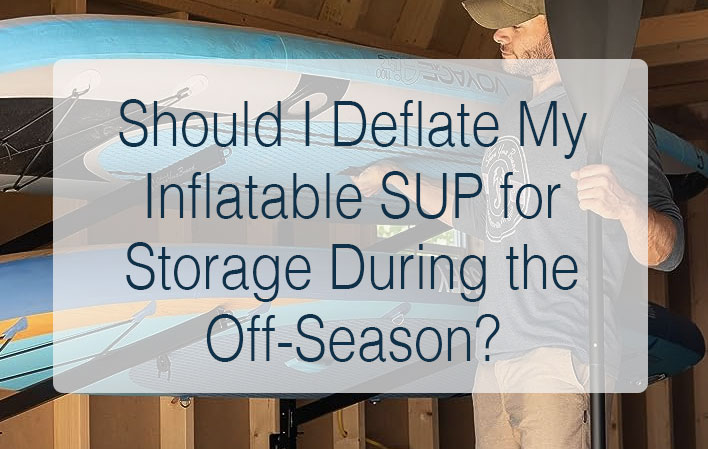Inflatable Stand-Up Paddleboards (iSUPs) have gained immense popularity due to their portability, durability, and ease of storage. However, when the off-season arrives or when you need to store your iSUP for an extended period, you may wonder whether it’s necessary to deflate it. In this article, we’ll discuss the considerations and provide guidance on whether or not you should deflate your inflatable SUP during the off-season, using markdown styles, lists, and tables to present a comprehensive overview.
Deflating Your iSUP: The Pros and Cons
Pros of Deflating Your iSUP
- Space-Saving: Deflating your iSUP significantly reduces its size, making it easier to store in compact spaces like closets or under beds.
- Preventing Overinflation: Keeping your iSUP inflated for extended periods can lead to overinflation, potentially damaging the board.
- Reducing Stress on Seams: Deflating the board relieves stress on the seams, potentially prolonging the life of your iSUP.
Cons of Deflating Your iSUP
- Setup Time: Inflatable SUPs are known for their quick setup. Deflating and inflating the board every time you want to paddle can be time-consuming.
- Potential Damage: Deflation and inflation can cause wear and tear on the valve, potentially leading to leaks over time.
- Loss of Pressure Control: If you’re in an environment with fluctuating temperatures, deflating and inflating your iSUP can make it challenging to maintain the ideal pressure.
Factors to Consider
Whether you should deflate your iSUP for storage depends on various factors. Consider the following:
Storage Space
- Limited Space: If you have limited storage space, deflating your iSUP makes sense as it reduces the board to a manageable size.
- Ample Space: If space isn’t an issue, keeping your iSUP inflated may be more convenient.
Storage Duration
- Short-Term Storage: If you plan to store your iSUP for a few weeks or a couple of months, you can keep it inflated with no major concerns.
- Long-Term Storage: For extended periods (several months or more), deflating the board can help prevent overinflation and reduce stress on the seams.
Environmental Factors
- Temperature Fluctuations: If you live in an area with significant temperature fluctuations, keeping your iSUP inflated can help you maintain optimal pressure.
- Consistent Climate: In a stable climate, deflating the board may be less of a concern.
Proper Deflation and Storage
If you decide to deflate your iSUP for storage, here’s how to do it properly:
- Clean and Dry: Before deflating, clean and thoroughly dry your iSUP to prevent mold and mildew.
- Release Air Slowly: Open the valve and release the air slowly. Use a pump or your hand to press down on the board gently to help push out the remaining air.
- Fold Carefully: Fold your deflated iSUP carefully, following the manufacturer’s guidelines. Avoid sharp creases that could damage the material.
- Store in a Bag: If your iSUP came with a storage bag, use it. If not, consider investing in a bag designed for your board’s size.
- Avoid Direct Sunlight: Store your deflated iSUP in a cool, dry place, away from direct sunlight and extreme temperatures.
Regular Maintenance
Whether you choose to deflate your iSUP or keep it inflated, regular maintenance is essential:
- Inspect for Damage: Periodically check your board for any signs of damage or wear, such as punctures, delamination, or loose seams.
- Clean and Dry: Use marine cleaner and dry your iSUP before storing it, and perform a thorough inspection during this process.
- Valve Maintenance: Pay attention to the valve; if it shows signs of wear or leaks, consult the manufacturer for repairs or replacements.
Conclusion
Whether to deflate your inflatable SUP for off-season storage ultimately depends on your circumstances and preferences. If you have limited storage space or plan to store your board for an extended period, deflation is a prudent choice. However, if you have ample space and intend to use your iSUP regularly, keeping it inflated may be more convenient.
Regardless of your decision, proper maintenance, cleaning, and storage practices are essential to ensure your iSUP remains in top condition and ready for your next paddling adventure. By considering your specific needs and following these guidelines, you can make an informed choice about deflating or keeping your iSUP inflated during the off-season.
Thesandshore.com is a source where the post Should I Deflate My Inflatable SUP for Storage During the Off-Season appeared first.


